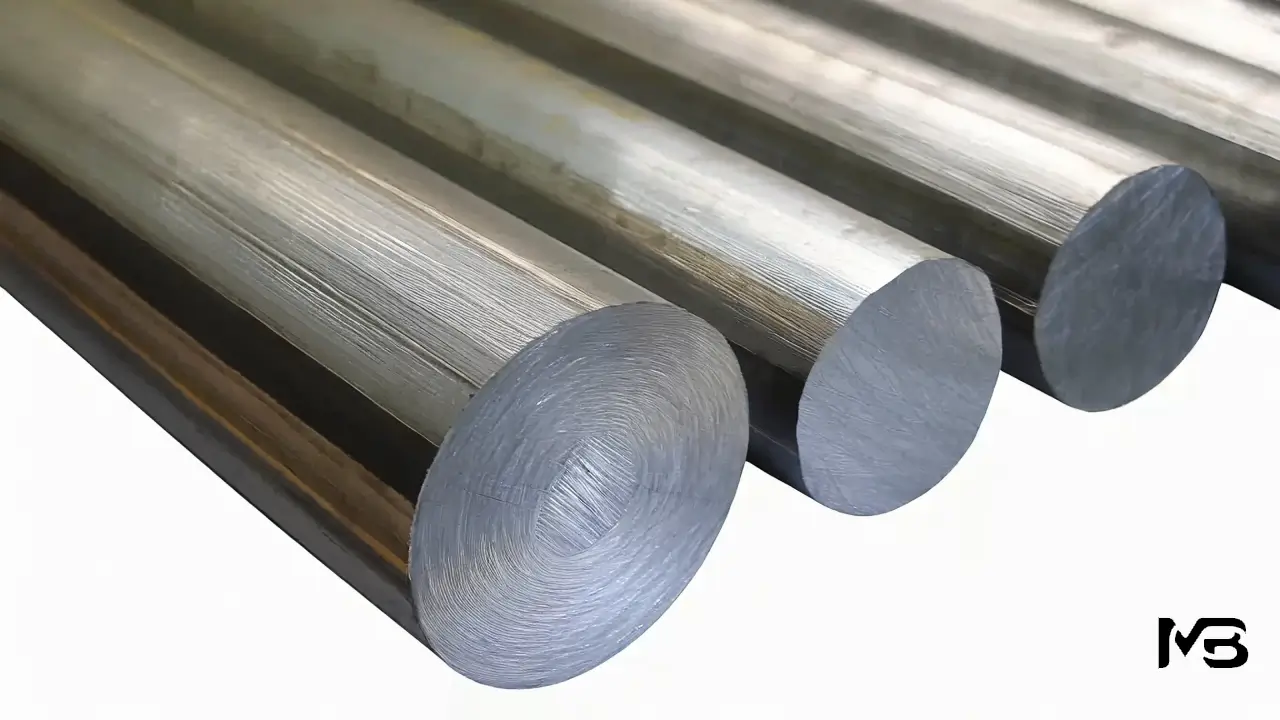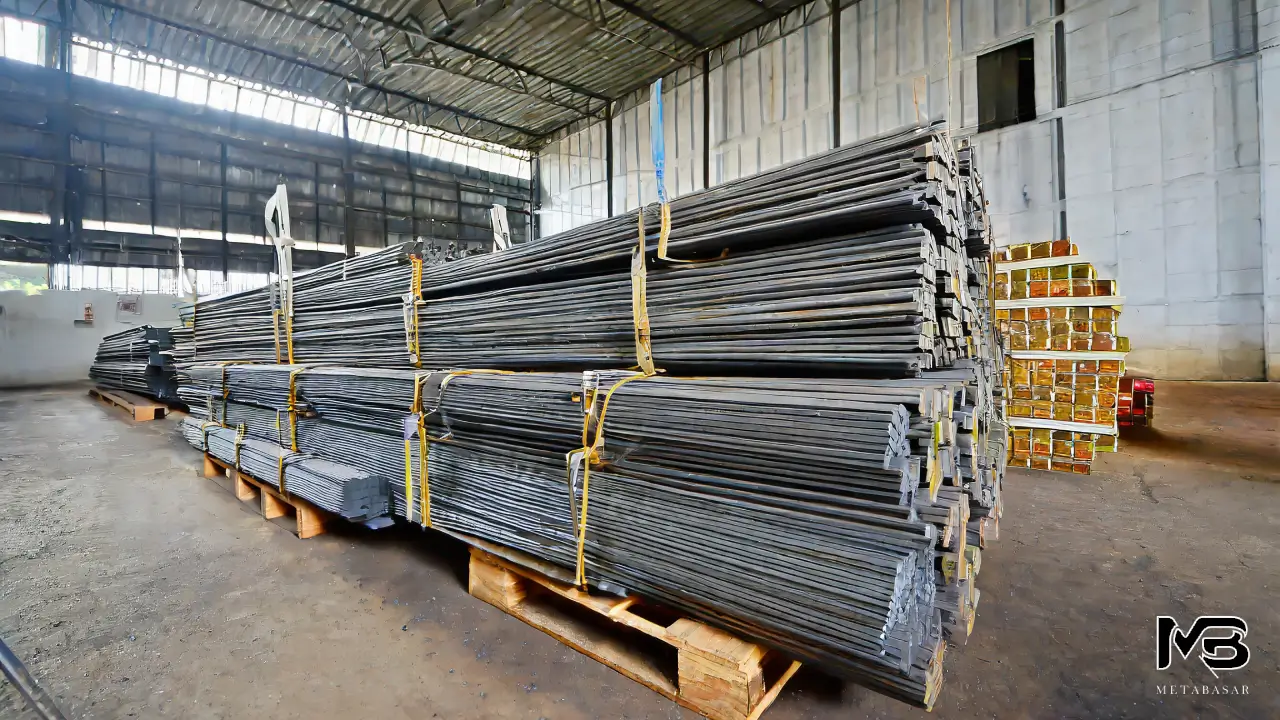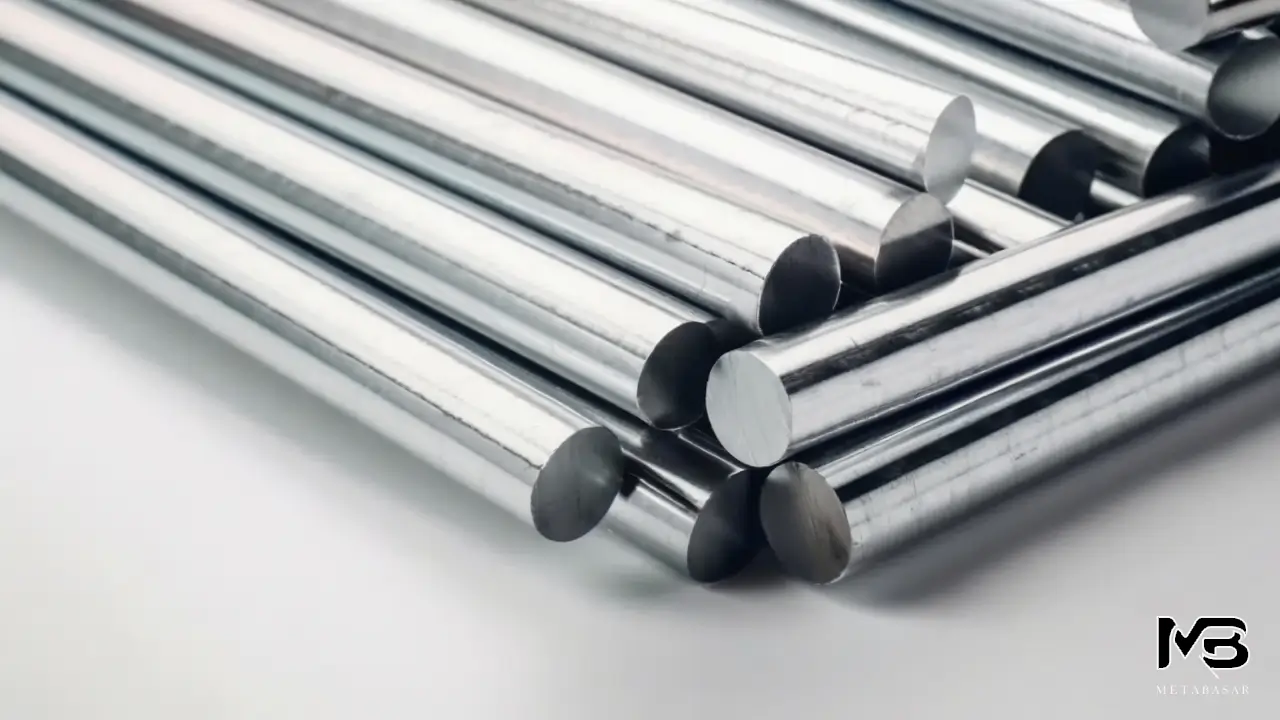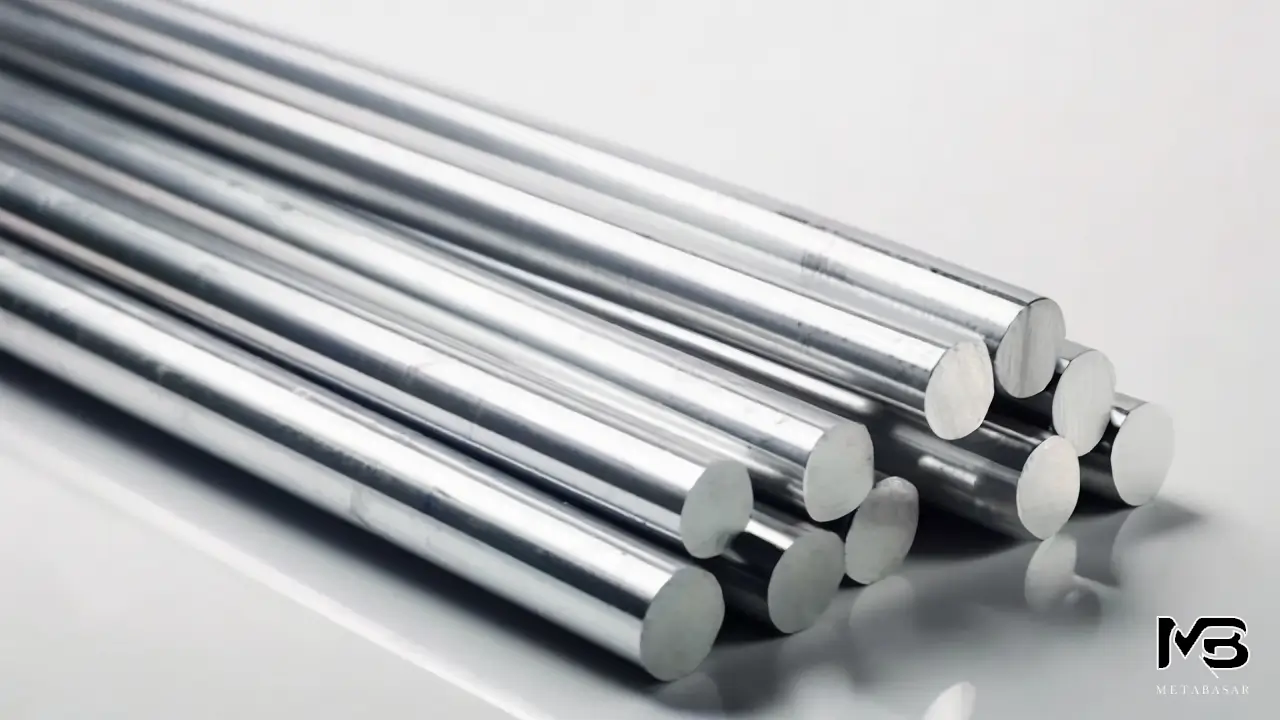Steel Rods : The Backbone of Sturdy Structures
Steel rod are the backbone of sturdy structures. They provide the necessary support and strength to any building or infrastructure project. Whether it is a skyscraper, bridge, or even your home’s foundation, steel rods play a crucial role in ensuring the safety and longevity of these structures.
In this blog, we will take a deep dive into understanding what steel rods are, their different types, characteristics, and applications in construction. We will also discuss how to select the right steel rod for your specific project needs and how to maintain them to ensure maximum longevity.
Whether you are an engineer, contractor or a DIY enthusiast looking to build something strong and durable, this blog is a must-read for anyone interested in learning about steel rods and their critical role in construction.
Table of Content
- 1 Understanding Steel Rods
- 2 Different Types of Steel Rods
- 3 Characteristics of Steel Rods
- 4 Application of Steel Rods in Construction
- 5 How to Select the Right Steel Rod?
- 6 Maintaining Steel Rods for Longevity
- 7 Frequently Asked Questions
- 7.1 What are steel rods and how are they used in construction?
- 7.2 What are the benefits of using steel rods over other materials for building structures?
- 7.3 How can the quality of steel rods affect the safety and durability of a structure?
- 7.4 What is the process for installing and reinforcing steel rods in a structure?
- 8 Conclusion
Understanding Steel Rods
Versatile metal bars like steel rods, made from mild steel, stainless steel, or alloy steel, are essential in construction and engineering. They come in various compositions, lengths, and diameters, suitable for different applications. Steel rods play a pivotal role in shaping sturdy structures, offering durability and strength. Whether used as a framework for buildings or reinforcing concrete, their significance cannot be overstated.

Definition and Use
Steel rods, also known as cylindrical metal bars, are essential for providing structural support in construction. Their strength and durability make them versatile building materials used in manufacturing, architectural designs, concrete reinforcement, fencing, and mechanical components across various industries. These rods play a crucial role in the stability and longevity of structures, making them indispensable in the construction and fabrication processes.
Importance in Sturdy Structures
Steel rods are essential for ensuring the stability and integrity of structures, offering resilience against bending, shearing, and other forces. Their high tensile strength makes them ideal for bearing heavy loads, contributing to earthquake resistance and overall safety. Additionally, they enhance the longevity and reliability of buildings, making them a crucial component in sturdy structures.
Different Types of Steel Rods
Stainless steel rods exhibit corrosion resistance, making them ideal for outdoor use. A36 steel round bars are commonly employed in general fabrication and repairs, while high carbon steel rods offer outstanding hardness and wear resistance. Each type of steel rod possesses unique properties tailored to specific applications. The selection of steel rods hinges on the intended purpose and desired characteristics.

Stainless Steel Rods
Stainless steel rods, alloyed with chromium, resist corrosion, fitting for marine, coastal, and chemical settings. Their durability suits outdoor structures, favored for aesthetics and low maintenance. Versatile in architectural and industrial applications, these rods enhance longevity and reliability. In a variety of environments, including those requiring tube clamps, vat, copper, brass, or aluminium, stainless steel rods prove their resilience.
A36 Steel Round Bars
Exhibiting exceptional welding, forming, and machining properties, A36 steel round bars are essential in construction, manufacturing, and structural projects. Cost-effective and readily available in various sizes, their versatility makes them suitable for diverse fabrication applications. With good ductility, these rods can be easily welded or bolted, showcasing their reliability in a range of construction and manufacturing settings.
High Carbon Steel Rods
High carbon steel rods are valued for their heat-treatable nature, allowing customization of properties and applications in tools, springs, cutlery, and industrial machinery. With a higher percentage of carbon, they exhibit enhanced hardness, retaining sharp edges and withstanding heavy loads, making them essential in specialized applications. Their unique properties contribute to their significance in various industrial sectors.
Characteristics of Steel Rods
The mechanical properties of steel rods, including strength, ductility, and toughness, are crucial for structural integrity. Durability and corrosion resistance make steel rods long-lasting, while their excellent thermal conductivity and electrical resistivity add to their versatility. The specific properties of steel rods are determined by their alloy composition, leading to various available finishes like polished, galvanized, or coated, meeting different application requirements.
Mechanical Properties
The load-bearing capacity of steel rods is determined by their mechanical properties. High tensile strength allows them to withstand tension, while ductility enables deformation without fracturing under excessive loads. Additionally, toughness is crucial for absorbing energy and resisting fracture, making steel rods indispensable in structural applications. These properties showcase the significance of steel rods in ensuring the durability and strength of sturdy structures.
Durability and Strength
Steel rods are designed for longevity with minimal maintenance needs. Their exceptional strength provides stability and support for various structures, withstanding harsh conditions and heavy loads. Additionally, resistance to corrosion and environmental factors enhances their lifespan, making them integral to industries. The combination of durability and strength in steel rods ensures reliability and robustness, supporting their widespread application.
Application of Steel Rods in Construction
Enhancing the strength and durability of concrete, steel rods play a crucial role in reinforcing structures. From building frameworks to bridges and high-rise buildings, they provide essential support and stability. The skeletal framework of various constructions greatly relies on steel rods for structural integrity, making them indispensable in the construction industry.
Reinforcing Concrete
By embedding steel rods into concrete, it resists tensile forces and boosts load-bearing ability. This technique prevents cracks and ensures structural stability, preventing collapse under pressure. Furthermore, it reinforces the compressive strength of concrete, making it more resilient. The addition of tube clamps and other metal fixtures improves the overall lifespan and durability of reinforced concrete structures.
Framework for Buildings
Steel rods create the essential framework for buildings, providing stability and support for walls, floors, and roofs. Their ability to withstand external forces and loads is critical for ensuring the structural integrity of buildings, forming the backbone of sturdy structures. The framework built by steel rods plays a crucial role in maintaining the stability and resilience of various types of constructions.
How to Select the Right Steel Rod?
Assessing structural requirements is crucial when choosing a steel rod, ensuring it can handle the intended load. Understanding environmental factors helps in selecting corrosion-resistant rods for longevity. Consider diameter, length, material, and properties like corrosion resistance, strength, and durability for optimal selection.
Assessing Structural Requirements
Understanding the load-bearing capacity and tensile strength requirements is pivotal in structural analysis for optimal steel rod specifications. Anticipated forces and stresses must be assessed to select the suitable steel rods, considering the specific application and adhering to engineering standards and regulations. This comprehensive assessment ensures the selection of the appropriate steel rods for any construction or engineering project.
Understanding Environmental Factors
Environmental factors, such as humidity and temperature, significantly influence the selection of steel rods for construction projects. Assessment of exposure to corrosive elements is crucial in choosing corrosion-resistant steel rods. Analyzing the environment helps in selecting steel rods that can endure harsh conditions, including potential chemical exposure. Moreover, considering weather patterns and climate is essential in determining the most suitable steel rods.
Maintaining Steel Rods for Longevity
Preventing corrosion prolongs steel rod life, while proper maintenance retains structural integrity. Timely replacement of corroded rods is essential. Protective measures like encapsulation safeguard against environmental factors. Regular cleaning and lubrication preserve functionality, ensuring longevity
Prevention of Corrosion
To safeguard steel rods from corrosion, protective coatings like epoxy and zinc are applied. Environmental exposure is monitored to address corrosion triggers. Corrosion inhibitors and sealants prevent degradation. Regular inspection and maintenance are crucial in extending the lifespan of steel rods. Implementing cathodic protection systems is essential to safeguard against rusting. These preventive measures ensure the longevity of steel rods.
How does the right maintenance ensure longer life for steel rods?
Proper maintenance practices significantly contribute to the longevity of steel rods. Timely upkeep prevents structural degradation and reduces the risk of failure. Regular maintenance preserves their load-bearing capacity and structural integrity, while preventive measures like corrosion prevention extend their lifespan. Cleaning and protective treatments also play a crucial role in ensuring the durability of steel rods.

Frequently Asked Questions
What are steel rods and how are they used in construction?
Steel rods are long, thin metal bars made from steel. They are used in construction to reinforce concrete structures and provide additional strength. Commonly used in bridges, buildings, and large structures, the size and spacing of steel rods depend on specific applications and load requirements.
What are the benefits of using steel rods over other materials for building structures?
Steel rods offer numerous benefits over other materials in building structures. They are incredibly durable, with high tensile strength, making them ideal for heavy loads. Additionally, they are resistant to corrosion and require minimal maintenance.
Their versatility allows for various shapes and sizes, making them adaptable to different construction needs.
How can the quality of steel rods affect the safety and durability of a structure?
The safety and durability of a structure can be significantly impacted by the quality of steel rods used. Choosing low-quality rods may result in weaker structures that fail to meet necessary standards.
On the other hand, high-quality steel rods offer better strength and corrosion resistance, ensuring longevity and reducing the risk of structural failures or accidents.
What is the process for installing and reinforcing steel rods in a structure?
The installation process for steel rods involves drilling holes into the structure and placing the rods into the holes. They are then secured in place with epoxy or cement. Reinforcing steel rods can be added to an existing structure to increase its strength and durability. It is important to have a professional contractor install and reinforce steel rods for proper installation.
Conclusion
To ensure the structural stability and durability of any construction project, steel rods play a crucial role. Their high tensile strength and durability make them ideal for reinforcing concrete and providing a sturdy framework for buildings.
Different types of steel rods, such as stainless steel rods, A36 steel round bars, and high carbon steel rods, offer varying mechanical properties to suit different construction needs. Selecting the right steel rod involves assessing the structural requirements and understanding environmental factors that may affect its performance.
Proper maintenance, including prevention of corrosion, is essential for ensuring the longevity of steel rods and the structures they support. By prioritizing the quality and maintenance of steel rods, you can ensure the backbone of sturdy structures and the safety of individuals who inhabit them.

